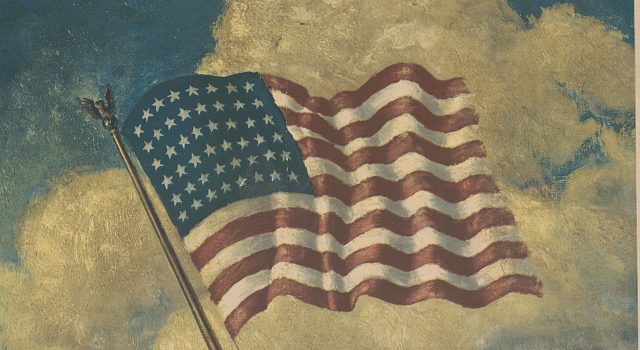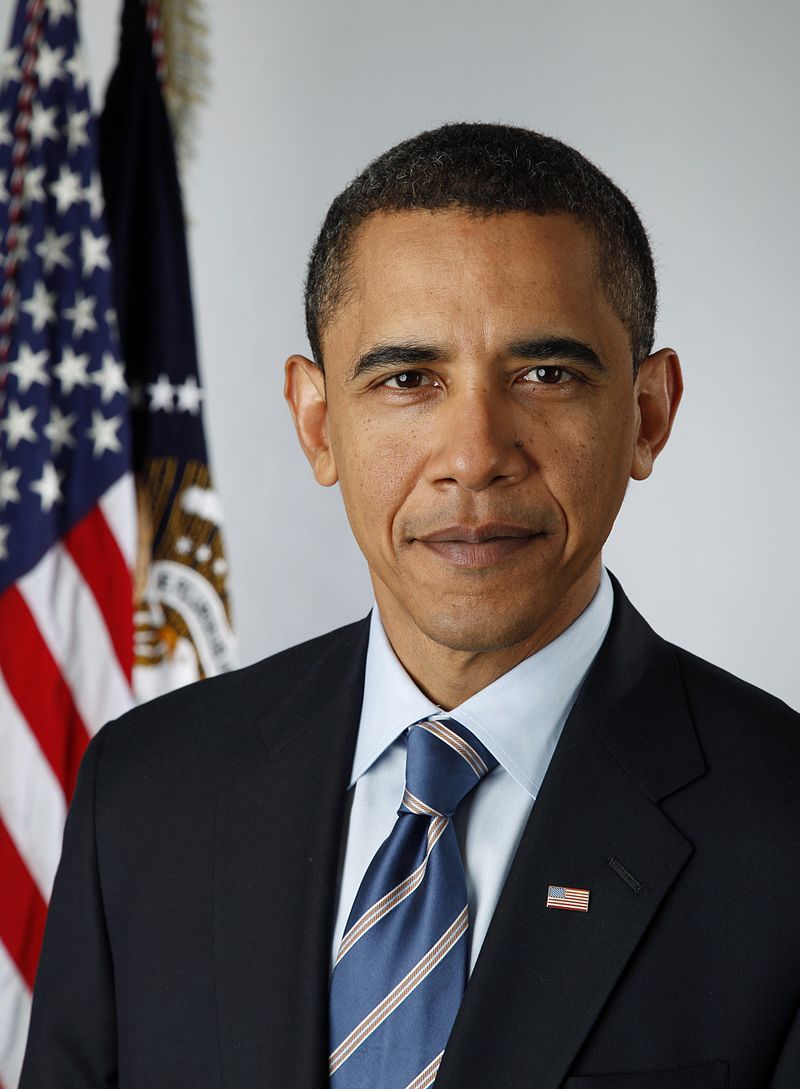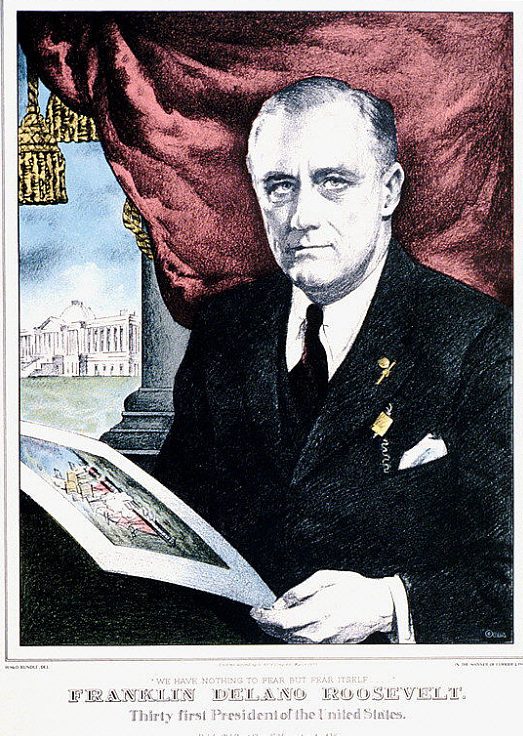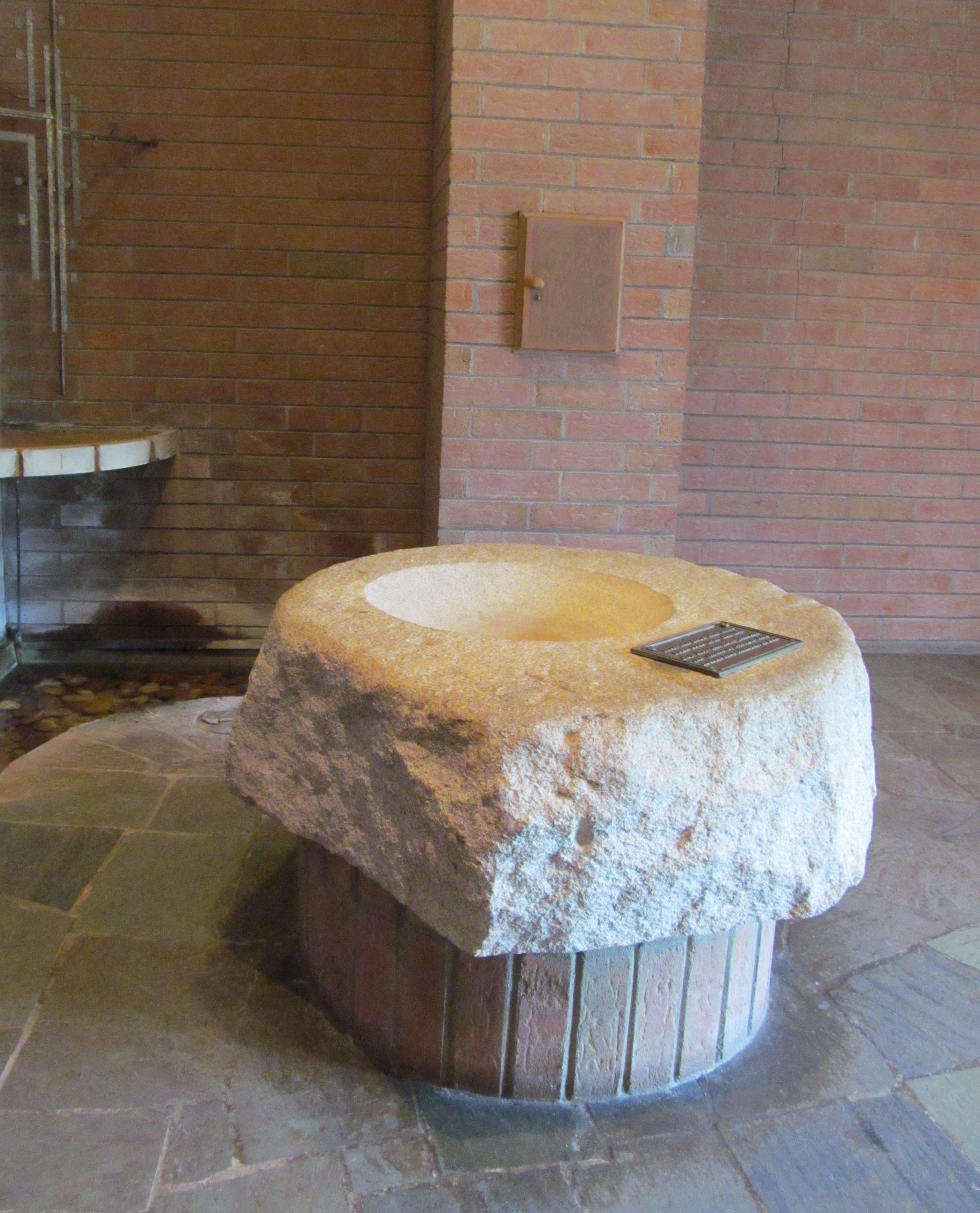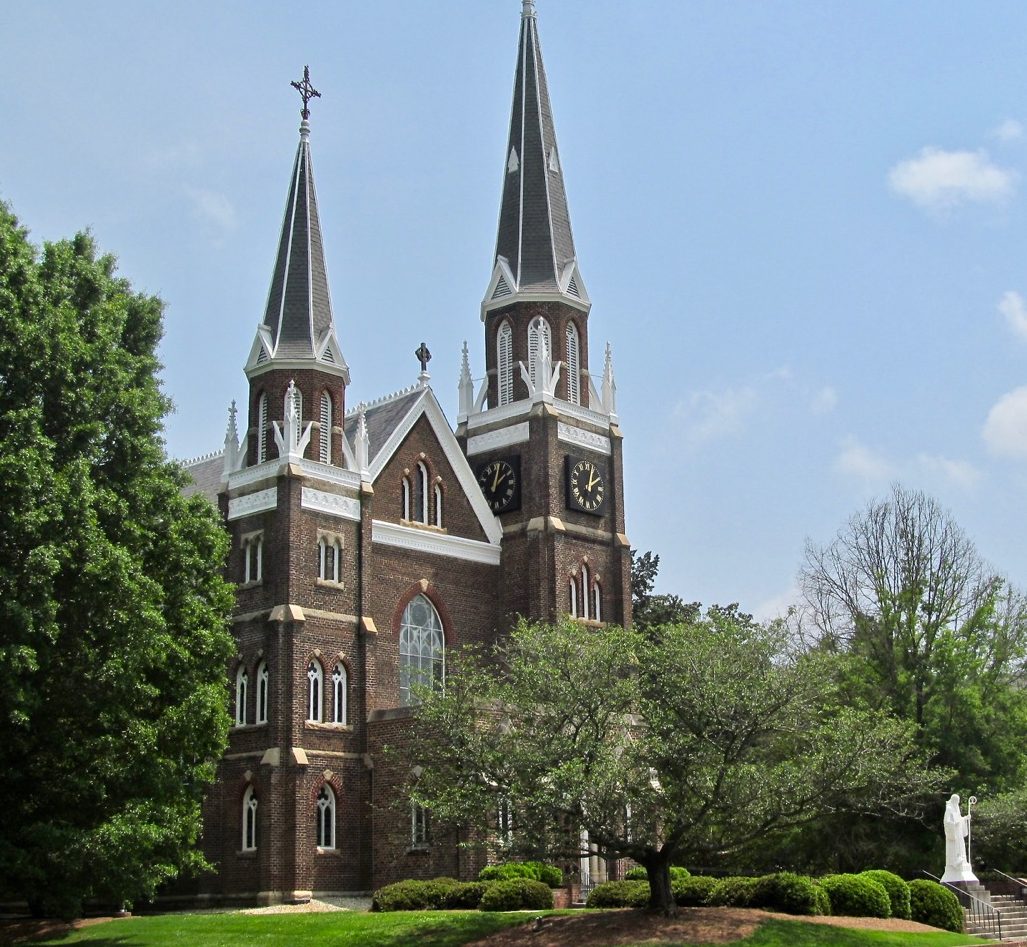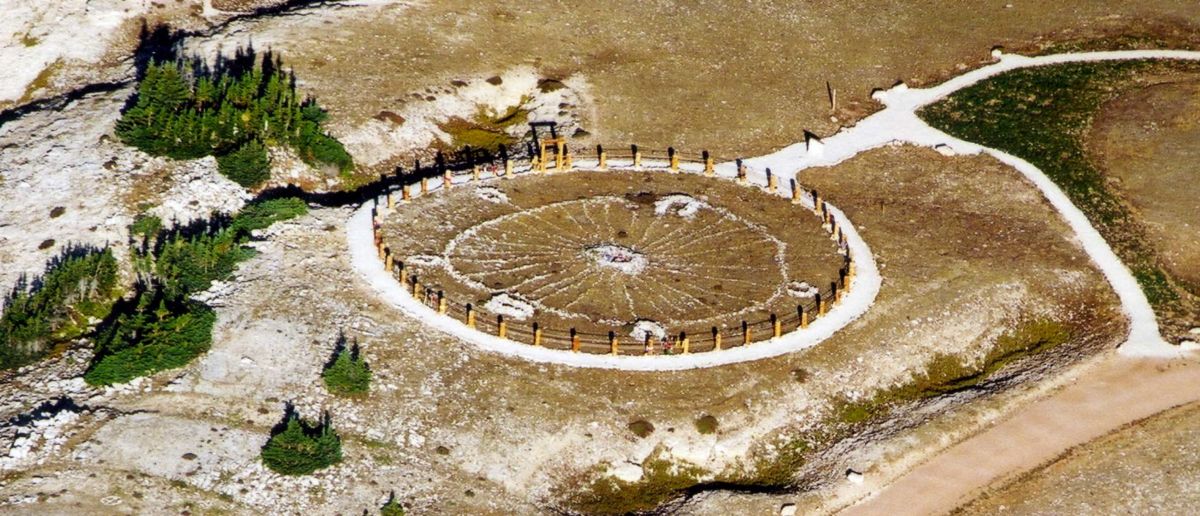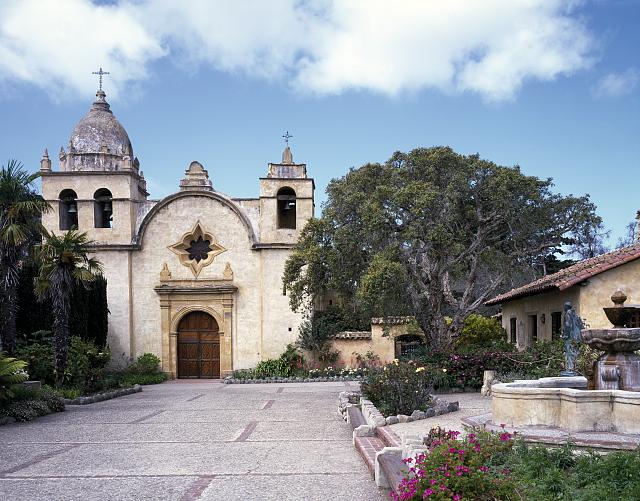The Salinas Missions of New Mexico
In New Mexico’s Estancia Basin, 17th-century Spanish Franciscans attempted to establish highly organized Christian communities, using native labor to build large churches—anticipating those they would later build along the Camino Real on the California coast. The failure of the project illustrates the tensions inherent in Spanish missionary efforts throughout the Southwest.

The interior of the sanctuary at Quarai, Salinas Pueblo Missions National Monument.
The “Salinas Missions” were so named for the nearby salt flats of the Estancia Basin, southeast of present-day Albuquerque. In three tribal communities near the flats—Cueloce (later called Las Humanas, and today called Gran Quivira), Abó, and Quarai, 17th-century Spanish Franciscan friars established ambitious but short-lived mission projects. The failure of their effort illustrates the tensions inherent in the Spanish conquest of the new world, a project fueled by the state’s need to project its power, the Spanish settlers’ quest for wealth, and the missionaries’ zeal to convert souls. The friars’ missionary efforts, which gave moral and spiritual justification to the conquest, often conflicted with the worldly goals of the civil authorities.
The Spanish View of the Pueblo Peoples
The Native Americans of the Southwest broadly termed “Pueblo” people constitute a number of distinct tribes speaking several dialects of two different language groups. They share a traditional style of settlement, consisting of clusters of stacked adobe dwellings, and practice a settled agriculture near their homes—habits that sharply distinguished them in Spanish eyes from more nomadic native groups. The Spanish gave the native settlements the Spanish name for village—pueblo—and viewed them as adaptable to their colonization plans.
Spanish settlement of the northern frontier of Mexico, the area of present-day New Mexico, Arizona, and Utah, did not begin until the end of the 16th century. This arid region, which the Spanish called “New Mexico,” presented a difficult rocky terrain and was far from the administrative and supply center of Mexico City. Still, the Spanish pressed northward out of fear that other European powers were encroaching on their New World claims and because the hidalgos—petty nobility who hoped to make their fortunes in the new world—demanded new provinces to exploit. Rumors of “Seven Cities of Cibola” they’d first heard from the early explorer Cabeza de Vaca suggested mineral riches lay to the north.[1] In 1539, the Viceroy of New Spain, Antonio de Mendoza, sent Vasquez de Coronado into New Mexico with an exploratory party. He stormed resistant pueblo communities, killing many and raiding their food stores, but never found gold.
Traditional Pueblo Life
Perhaps de Vaca had misunderstood stories really meant to describe a bustling network of trading centers that grew up among eastern pueblo communities. For generations, towns like Cueloce, Abó, and Quarai, south of present-day Albuquerque, had mediated a trade between tribes of the west, south and east. Nearby Puebloans brought silver and turquoise from the surrounding areas and shells traded to them from the Pacific coast. Aztecs from the south brought copper and macaws with colorful, highly prized feathers. Nomadic Plains Indians from

This pottery canteen displays the Tabirá style, thought to have been brought to Las Humanas by Zuni refugees from Hawikuh Pueblo after it was attacked by Coronado. (Museum at Gran Quivira, Salinas Missions National Monument.)
the east brought buffalo meat and hides. The local Puebloans, middlemen for the overall trade, bartered their corn, handmade pottery and blankets, and salt from the nearby flats. The pueblo of Cueloce (Las Humanas) seems to have been built for this commerce; it was sited on a hill where approaching traders could be sited at a distance, rather than along a stream that would have enabled easy irrigation of crops.
Although they met to trade, the Puebloan tribes did not form political alliances between communities. Nor could the climate of the region, with average rainfall of around 11 inches per year, easily sustain large towns. Hence, when Don Juan de Onate set out in 1598 to settle “New Mexico,” the natives could not mount a unified resistance. Onate marched to a Pueblo town north of present-day Santa Fe, evicted the native community from their adobe homes, and set up a base he called San Gabriel. From there he set about exploring the area, looking for the still hoped-for mineral wealth and demanding Pueblo allegiance to the Spanish crown. At first, the Pueblo people he encountered warily assented to Onate’s demands. Since Coronado’s visit 60 years earlier, they had anticipated the arrival of powerful men with armor, horses and swords.[2] In the Estancia Basin, after the natives gave Onate the provisions he demanded, he moved on, leaving no Spanish administrator in his place. Three more decades passed before Franciscan friars arrived to thoroughly reorganize their lives.
Conquest Through Conversion
After Onate, discouraged by difficulties in settling the New Mexico and making it profitable, resigned his post in 1607, the Spanish crown decided to send Franciscan priests to convert the natives and “pacify” the area. In the Estancia Basin, Friar Francisco Fonte was the first to carry out this work, arriving at Abó in 1622. He was followed in 1626 by friar Juan Gutierrez de la Chica, who established a mission at Quarai. In 1627, Friar Alonso de Benavides, the custos who headed the custody (missionary district) of New Mexico, founded the mission at Las Humanas, the last and largest of the three Salinas pueblos.
The friars initially saw the Pueblo people’s religious practices, involving respect to the natural world and its creatures, as congruous with the practices of their founder, Francis of Assisi. They failed to appreciate that to the Pueblo people, careful attention to the natural environment was bound up with the propitiation of deities who protected the fragile ecological balance of the area and made their agriculture possible.

Ruins of the Sanctuary (at left) and Convento (right) at Abó.
The friars immediately conscripted native labor in building large churches and the convento adjacent to each (a living and storage area as well as a school where the friars also taught the natives Spanish, new agricultural methods, and European artisan ship). Pueblo people were experienced in brick and adobe construction, but none had ever built to the dimensions of the new church planned for Abó, with its interior width of twenty-five feet, length of eighty four feet, and ceiling over twenty-five feet high. Women and children were employed making bricks and in applying the thick coat of adobe plaster that finished the walls of churches and conventos. Male labor was needed in the heavier construction work, the hewing and transport of massive logs from area forests to support ceilings, doors and windows, and in the hunting of game to supplement the friars’ diet.
At first, the friars tolerantly overlooked the natives’ continued practice of “kachina” rites in underground “kivas”—large circular rooms found in most of the ancient pueblo ruins, where tribe members met for rites with masked shamans, who represented ancient spirits who had guided their ancestors and still protected them. In fact, the excavated ruins at Abó and Quarai reveal kivas built into the courtyards of each convento—suggesting the early friars thought that providing this traditional space would help the natives transition to Christianity. By 1661 the friars had realized that the natives saw Christianity as an addition to their traditional practices, not a faith that supplanted tradition. The Franciscan custos ordered the friars to punish the kachina priests and destroy the kivas.
Competition Between Church and Civil Authorities
By then, the civil authorities were also exerting heavy demands. Absent the hoped-for gold and silver, Spanish settlers given land grants in the Puebloans’ ancestral territory tried to work farms and ranches for profit, imposing on the natives much in the way that Spanish feudal landlords imposed upon European peasants. They also conscripted Pueblo people to harvest salt, which was found useful in the refining of silver, to be sent south to the mines of Mexico and Bolivia. Conflicts arose between the church and civil authorities, as each tried to monopolize native labor. While the friars forbade the traditional spiritual practices, civil authorities tried to ingratiate themselves with the natives by encouraging them. Government representatives openly quarreled with the Franciscans. At Quarai, the mayor of the Salinas province stood up during mass to shout at a friar who was preaching the supreme authority of the church. Meanwhile, the friars used the natives to give testimony against civil authorities accused of impiety, so that they might haul their antagonists before Inquisition authorities in Mexico City. These disputes eroded the respect the natives had at first felt for the powerfully armed and technologically advanced Spanish.

This jar excavated at Las Humanas displays the Chupadero style of pottery characteristic of the Tompiro-speaking people who lived there before the mid-16th century.
Overworked and caught between competing church and civil demands, the natives found it harder to meet their own food needs. At Las Humanas, where the natives practiced dry agriculture, it wasn’t possible to intensify agriculture to increase the yield. In all three of the Salinas missions, the needs of the friars and demands of the civilian authorities consumed the food reserves that the natives previously had put aside for the lean years that came in times of drought. A drought in the 1670s drove both natives and Spanish colonists to successively abandon the three communities at Las Humanas, Abó, and Quarai. They dispersed to communities in the north and east. The Spanish, enjoined by the crown to stay in the region, were not leaving it, even though a resistant spirit building in the Pueblo people would lead to a revolt centered at Taos in 1680, causing a twelve-year Spanish retreat from the upper Rio Grande region.
The great adobe churches constructed in the Estancia Basin fell into ruin after they were abandoned. Americans who resettled the area in the 19th century carried off some of the building materials, such as the decoratively carved ceiling beams used in the church sanctuaries. Hence the buildings today appear unfinished ruins, although for several decades they were bustling centers of religious activity.
Notes
[1]After surviving an ill-fated expedition to the west coast of Florida in 1527, de Vaca spent eight incredible years walking his way westward to Mexico through the Southwest. The natives he met—who were already suffering from diseases introduced by European explorers and thought that the Spanish, who were protected by immunities, must have unknown spiritual powers—pressed him to use these powers to heal them. De Vaca learned to use prayer and Christian signs, along with a native technique to actually restore many natives to health. His sympathetic account of the natives influenced the decision of the crown to send Franciscans to convert and “pacify” them. His passing mention of the natives’ talk of golden cities encouraged adventurers to push beyond the northern frontier of Spanish settlement, into the area they would name “New Mexico.” Accounts of De Vaca’s odyssey may be found in Kessell, p. 16 – 23; Marrin, p. 6 – 30; and in the account De Vaca wrote himself: Alvar Nunez Cabeza de Vaca, Chronicle of the Narvaez Expedition, translated by Fanny Bandelier; revised and annotated by Harold Augenbraum (Penguin, 2002).Return
[2]In 1540, the Zuni pueblo of Hawikuh, 200 miles west of the Estancia Basin, had been attacked by Coronado when the Zuni denied him entry. Archaeologists suspect that refugees from the Zuni region caused a mid-sixteenth century population explosion in Cueloce, Abó and Quarai.
[3]For an account of life in the Salinas pueblo communities prior to contact with the Spanish, see Murphy, p. 5 -20.Return
[4]In 1540, the Zuni pueblo of Hawikuh, 200 miles west of the Estancia Basin, had been attacked by Coronado when the Zuni denied him entry. Archaeologists suspect that refugees from the Zuni region caused a mid-sixteenth century population explosion in Cueloce, Abó and Quarai. See Murphy, p. 15 -16.Return
[5]Murphy describes the establishment of the missions and the way of life the friars imposed on the Pueblo in Salinas Pueblo Missions, p. 26 – 50. See also Taylor, p. 83 -85.Return
[6]Accounts of the church-civil conflict in all the missions of the Southwest can be found in Kessell, p. 97 – 118 and in Taylor, p. 86 -88. For the particulars in the Salinas Missions, see Murphy, p. 51 – 58.Return
[7]Murphy, p. 58 – 60.Return
Citation
John L. Kessell, Spain in the Southwest: A Narrative History of Colonial New Mexico, Arizona, Texas, and California (University of Oklahoma Press, 2002)
Albert Marrin, Empires Lost and Won: The Spanish Heritage in the Southwest (Atheneum Books For Young Readers, Simon and Schuster, 1997)
Dan Murphy, Salinas Pueblo Missions: Abó, Quarai, and Gran Quivira (Western National Parks Association, 1993)
Alan Taylor, American Colonies: The Settling of North America (Penguin, 2002)
